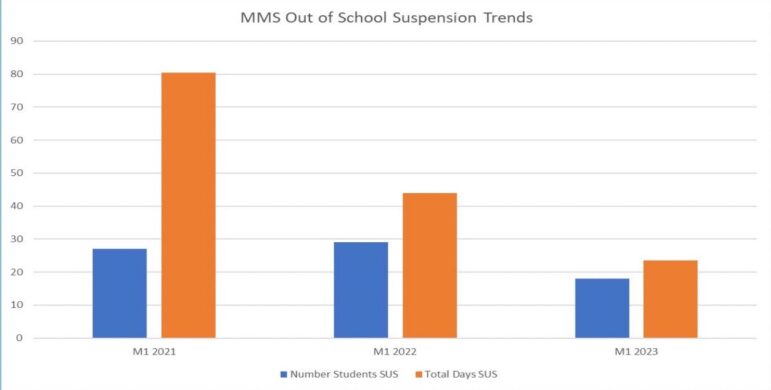Restorative justice is not always widely used in a traditional classroom setting. However, MacDonald Middle School has seen significant improvements among its students since adopting this system. Restorative justice is an alternative to punishment and a more peaceful discipline approach used to repair harm that has been done, according to MacDonald Principal, Amy Martin.
“Restorative justice looks at all parties involved and gives the opportunity for all parties in the conflict to have a voice and to be heard,” Martin said. “Then we have to come to an agreement on how to peacefully coexist in the same place.”
Martin has been at MacDonald for nine years and said restorative practices were implemented at the school in 2000. She said the administration has encountered some system issues along the way.
“We didn’t really have a balance between restorative practices and traditional consequences for students,” Martin said. “And as a result of that, we had high support, but not high accountability for students.”
However, this school year, they’ve especially seen a positive change in students’ attitudes and behaviors and, in turn, a significant decrease in suspensions. Martin said their success is due to creating a student advocacy team. Restorative practices specialist Adeline Alderink is one of three members of that team.
Following increased school funding, Alderink’s position at MacDonald changed from being contracted by an outside non-profit organization to an official district employee. She said this change has helped her be more consistent in her practices with students, but that the success of restorative justice lies within the school’s culture.
“I think that people always just think it’s like, oh, this position changed everything,” Alderink said. “It’s not the position, it’s just the fact that the restorative mindset is being spread throughout the school and people are just really getting behind it.”
Alderink works very closely with students, inviting them to participate in a “circle” consisting of all students affected by an incident and other teachers and administrators if needed. She helps start a dialogue between students so that they can openly communicate how they were impacted.
“When you give students a space just to talk, they really take advantage of it,” Alderink said. “In the middle school, there’s always people around and there’s never a place to just have that private conversation. I think that they really take advantage of it, which is really beautiful.”
Board of Education Trustee and MacDonald Middle School parent Terah Chambers said these practices have made her son feel like his feelings are “valid and appreciated,” even if the outcome isn’t necessarily what he wanted. Chambers said she’s also seen a change in his informal peer interactions, where they’ve incorporated restorative language all on their own.
“I think that’s part of the intention of the program, for them to use these scaffolded practices, obviously with help from these adults in the school, but also feel very confident to use them on their own when they’re facing these situations in the real world,” Chambers said. “I would consider that a real win.”
Chambers said that while the journey to successful restorative justice at MacDonald hasn’t always been smooth, she’s grateful that administrators have continually invested time and energy into the practice.
“We’re not perfect, but we are working really, really hard at doing this right, and that is not easy to do,” Chambers said. “It’s pretty special.”
